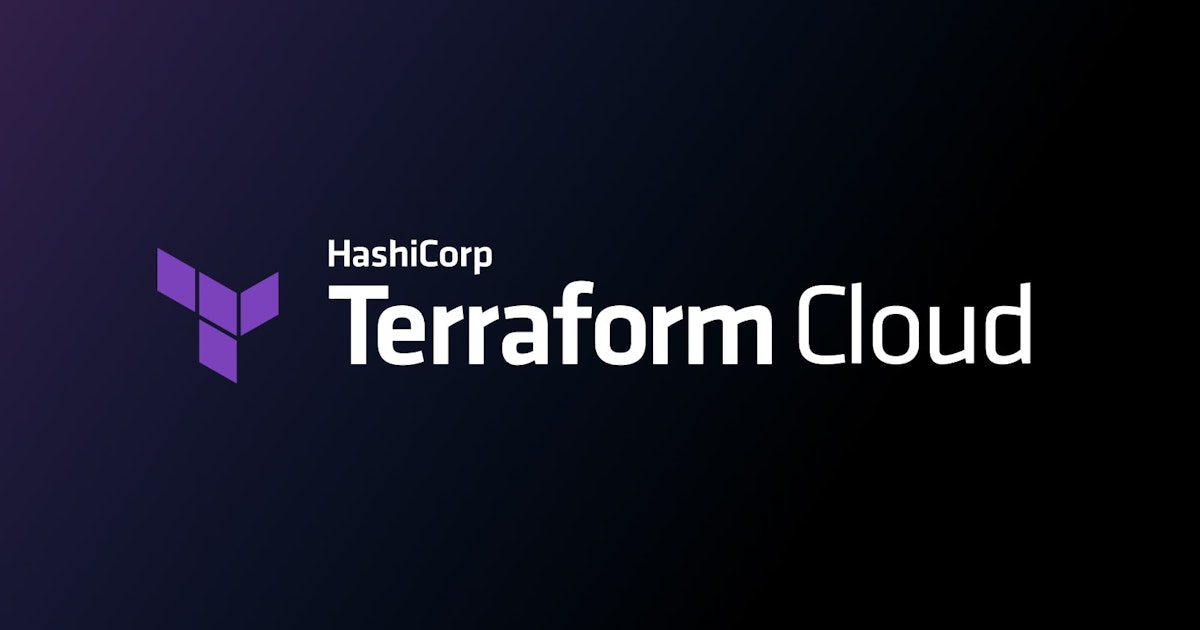Speed Up Terraform Refresh: Tips & Tricks
Learn practical tips and tricks to significantly speed up your Terraform state refresh times and boost your infrastructure automation workflow efficiency.
Learn practical tips and tricks to significantly speed up your Terraform state refresh times and boost your infrastructure automation workflow efficiency.
Terraform refresh is a crucial step in keeping your infrastructure configuration in sync with your Terraform code. However, as your infrastructure grows, refreshing the state can become time-consuming. This article provides practical tips and techniques to accelerate the Terraform refresh process, helping you manage your infrastructure more efficiently.
To speed up Terraform refresh, consider these tips:
Optimize your Terraform code:
# Instead of a single large file:
# main.tf
# Use separate modules:
# modules/vpc/main.tf
# modules/database/main.tf-target: Refresh only specific resources or modules.terraform refresh -target=module.vpcLeverage Terraform features:
-refresh=false: Skip refreshing state during terraform plan. Useful if you know the state is up-to-date.terraform plan -refresh=false-refresh-only: Only refresh state without generating a plan.terraform plan -refresh-onlyImprove backend performance:
Other optimizations:
terraform apply -parallelism=10-target with terraform apply to limit the scope of changes.By implementing these strategies, you can significantly reduce the time it takes to refresh your Terraform state and improve your overall workflow efficiency.
This code provides examples of how to speed up Terraform refresh using techniques like splitting code into modules, using the -target flag for selective refresh, skipping refresh with -refresh=false, refreshing state only with -refresh-only, configuring a remote backend, increasing parallelism, and targeting resources during apply.
This document provides code examples illustrating the techniques described in the article to speed up Terraform refresh.
1. Splitting into Smaller Modules:
Instead of managing all resources in a single main.tf file:
# main.tf (Before)
resource "aws_vpc" "main" {
cidr_block = "10.0.0.0/16"
}
resource "aws_subnet" "public" {
vpc_id = aws_vpc.main.id
cidr_block = "10.0.1.0/24"
}
resource "aws_instance" "web" {
ami = "ami-0c55b159c90d088c5"
instance_type = "t2.micro"
subnet_id = aws_subnet.public.id
}Split resources into logical modules:
# modules/vpc/main.tf
resource "aws_vpc" "main" {
cidr_block = "10.0.0.0/16"
}
resource "aws_subnet" "public" {
vpc_id = aws_vpc.main.id
cidr_block = "10.0.1.0/24"
}
# modules/webserver/main.tf
resource "aws_instance" "web" {
ami = "ami-0c55b159c90d088c5"
instance_type = "t2.micro"
subnet_id = aws_subnet.public.id
}
# main.tf
module "vpc" {
source = "./modules/vpc"
}
module "webserver" {
source = "./modules/webserver"
}
2. Using -target for Selective Refresh:
Refresh only the VPC module:
terraform refresh -target=module.vpc3. Leveraging -refresh=false:
Skip refreshing state during terraform plan if you're confident it's up-to-date:
terraform plan -refresh=false4. Utilizing -refresh-only:
Refresh the state without generating a plan:
terraform refresh -refresh-only5. Configuring a Remote Backend (Example with AWS S3):
terraform {
backend "s3" {
bucket = "your-terraform-state-bucket"
key = "path/to/your/state/file.tfstate"
region = "your-aws-region"
}
}6. Increasing Parallelism:
Allow Terraform to run 10 operations concurrently:
terraform apply -parallelism=107. Resource Targeting during Apply:
Apply changes only to the webserver instance:
terraform apply -target=aws_instance.webBy implementing these code examples and following the best practices outlined in the article, you can significantly optimize your Terraform refresh process and enhance your infrastructure management workflow.
General Considerations:
terraform plan or apply if you suspect drift.Debugging Slow Refreshes:
TF_LOG=DEBUG) to get detailed information about the refresh process and identify bottlenecks.Advanced Techniques:
Trade-offs:
-refresh=false can save time, it increases the risk of the state becoming out-of-sync with reality. Use cautiously.Beyond Refresh:
| Category | Tip | Description | Example |
|---|---|---|---|
| Code Optimization | Split into Modules | Divide infrastructure into logical modules to refresh only necessary parts. |
modules/vpc/main.tf, modules/database/main.tf
|
Use -target
|
Refresh specific resources or modules. | terraform refresh -target=module.vpc |
|
| Terraform Features | -refresh=false |
Skip refreshing state during terraform plan if state is up-to-date. |
terraform plan -refresh=false |
-refresh-only |
Refresh state without generating a plan. | terraform plan -refresh-only |
|
| Backend Performance | Choose a Fast Backend | Use remote backends like AWS S3 or HashiCorp Consul for large projects. | |
| Other Optimizations | Upgrade Terraform | Newer versions often have performance improvements. | |
| Parallelism | Increase parallel operations with -parallelism. |
terraform apply -parallelism=10 |
|
| Resource Targeting | Use -target with terraform apply to limit change scope. |
Optimizing the Terraform refresh process is crucial for maintaining an efficient workflow, especially as your infrastructure scales. By implementing techniques like modularizing your code, leveraging Terraform features like -target and -refresh=false, and improving backend performance, you can significantly reduce refresh times. Remember to consider other optimizations like upgrading Terraform, adjusting parallelism, and using resource targeting. Regularly reviewing and refining your Terraform code and refresh strategies will contribute to a more robust and agile infrastructure management process.
 Terraform plan taking long time - Terraform - HashiCorp Discuss | Hi, We are using terraform version 0.12.29. We have a pipeline which runs the following commands: terraform init terraform validate terraform plan terraform apply -auto-approve The time it used to take in the beginning was nearly 5 to 10 minutes but now as our codebase is increasing day by day and the number of resources are increasing the time the pipeline takes normally now is 30 minutes to 35 minutes and we are growing continuously hence, the time to d...
Terraform plan taking long time - Terraform - HashiCorp Discuss | Hi, We are using terraform version 0.12.29. We have a pipeline which runs the following commands: terraform init terraform validate terraform plan terraform apply -auto-approve The time it used to take in the beginning was nearly 5 to 10 minutes but now as our codebase is increasing day by day and the number of resources are increasing the time the pipeline takes normally now is 30 minutes to 35 minutes and we are growing continuously hence, the time to d... New Terraform Planning Options: -refresh=false, -refresh-only ... | Aug 20, 2021 ... With these new features customers can reduce the time it takes to make changes to their infrastructure. These features have been available ...
New Terraform Planning Options: -refresh=false, -refresh-only ... | Aug 20, 2021 ... With these new features customers can reduce the time it takes to make changes to their infrastructure. These features have been available ... Terraform CDK slow to refresh state - CDK for Terraform - HashiCorp ... | Terraform is starting to take 10+ minutes to refresh state for ~350 resources. I’m running terraform version 1.3.7 and cdktf version 0.12.0. 9:03AM /Users/paymahn/code/goldsky/goldsky-infra/cdktf.out ✘ 130 dev ✭ ✱ ❯❯❯ time npm run diff:prod ... ... goldsky-infra-prod Releasing state lock. This may take a few moments... npm run diff:prod 60.28s user 8.25s system 10% cpu 11:17.10 total I’ve found some old mentions of for_each being slow but I don’t see any instances of that in my .cdktf.ou...
Terraform CDK slow to refresh state - CDK for Terraform - HashiCorp ... | Terraform is starting to take 10+ minutes to refresh state for ~350 resources. I’m running terraform version 1.3.7 and cdktf version 0.12.0. 9:03AM /Users/paymahn/code/goldsky/goldsky-infra/cdktf.out ✘ 130 dev ✭ ✱ ❯❯❯ time npm run diff:prod ... ... goldsky-infra-prod Releasing state lock. This may take a few moments... npm run diff:prod 60.28s user 8.25s system 10% cpu 11:17.10 total I’ve found some old mentions of for_each being slow but I don’t see any instances of that in my .cdktf.ou... Stop using Terraform remote state blocks! | by Jonathan Hosmer ... | How we got rid of remote state lookups and made our Terraform multi-region aware
Stop using Terraform remote state blocks! | by Jonathan Hosmer ... | How we got rid of remote state lookups and made our Terraform multi-region aware Command: plan | Terraform | HashiCorp Developer | Refresh-only mode: creates a plan whose goal is only to update the Terraform state and any root module output values to match changes made to remote objects ...
Command: plan | Terraform | HashiCorp Developer | Refresh-only mode: creates a plan whose goal is only to update the Terraform state and any root module output values to match changes made to remote objects ... How to manage Terraform state. A guide to file layout, isolation, and ... | A guide to file layout, isolation, and locking for Terraform projects
How to manage Terraform state. A guide to file layout, isolation, and ... | A guide to file layout, isolation, and locking for Terraform projects